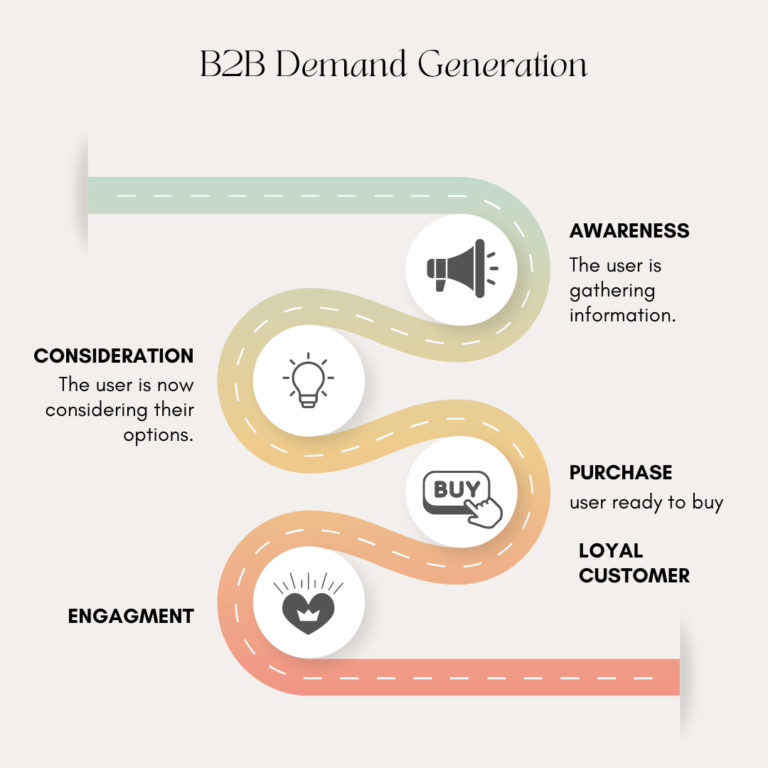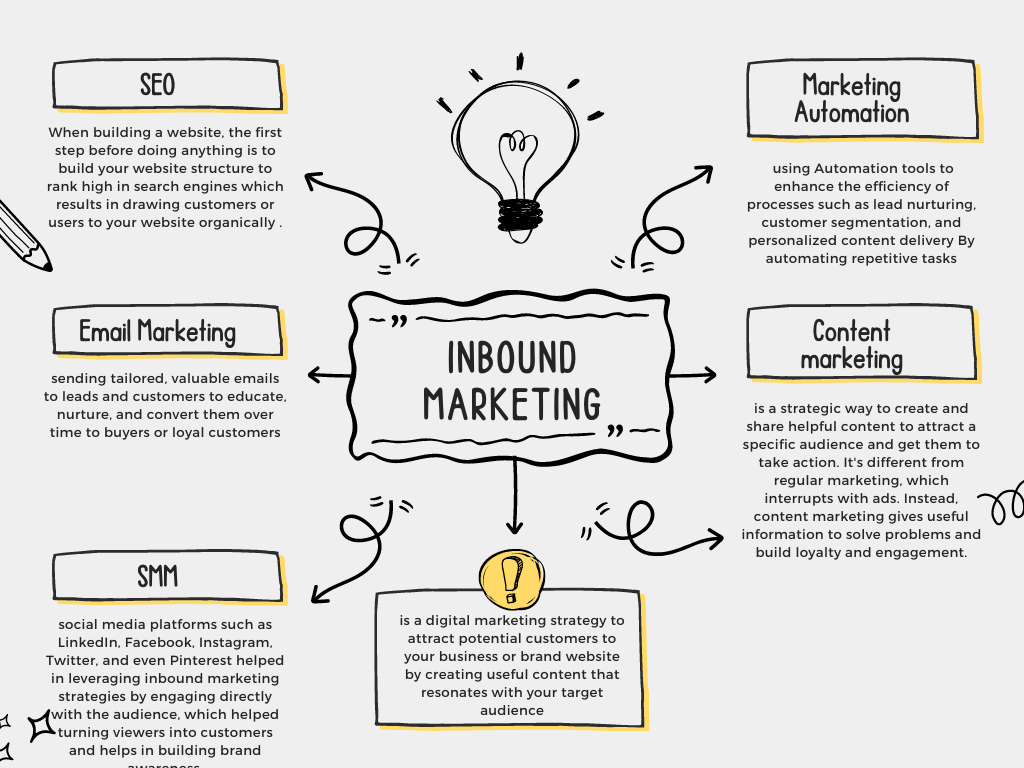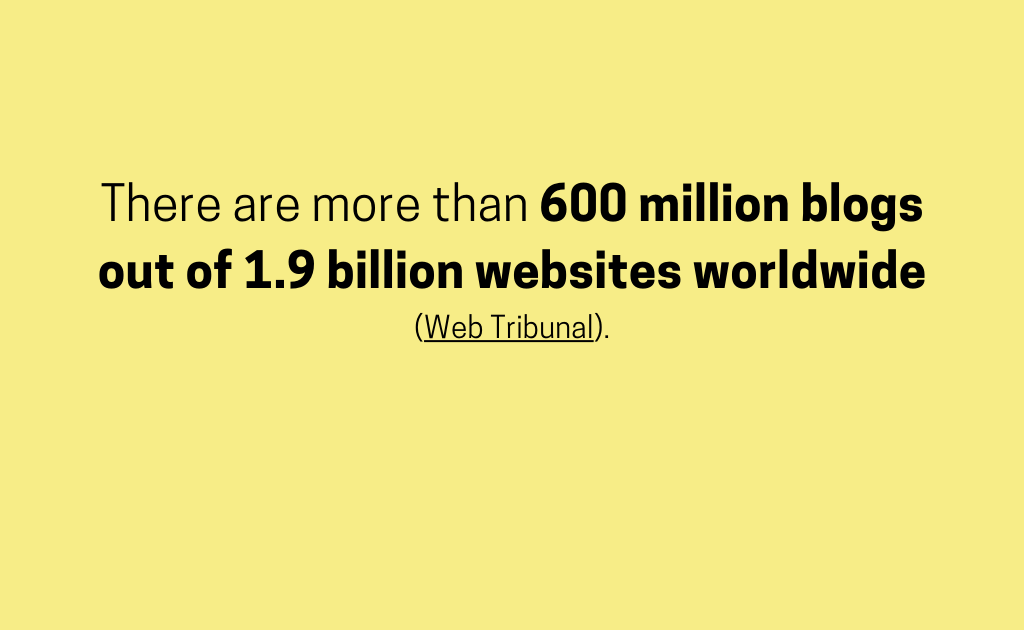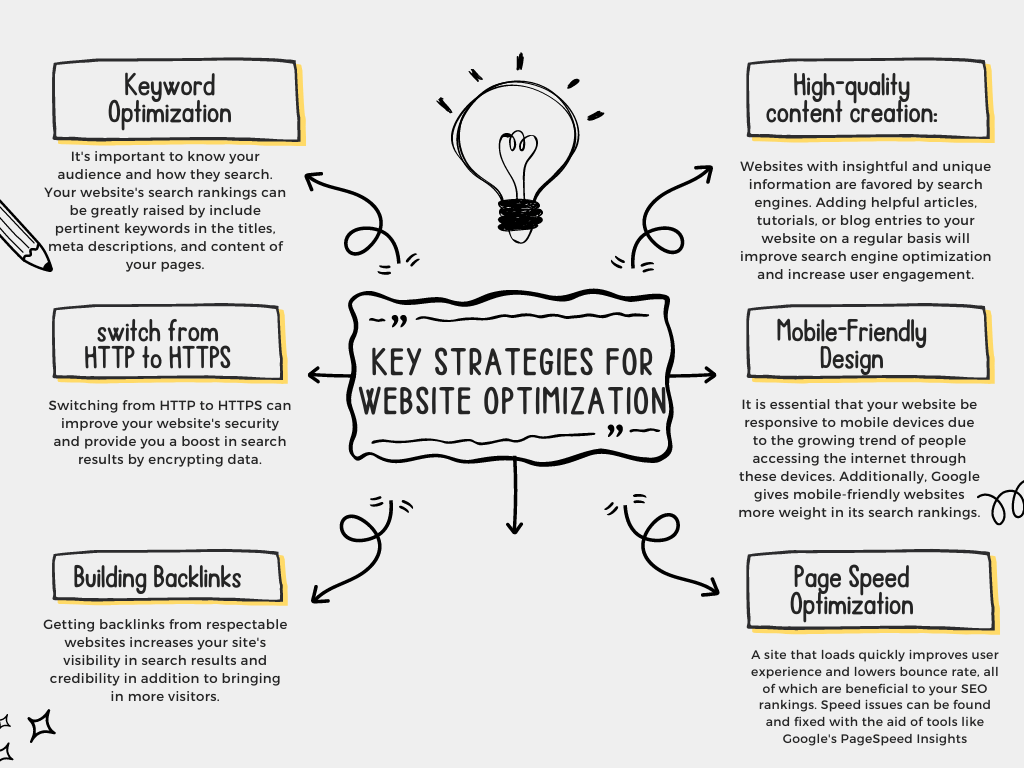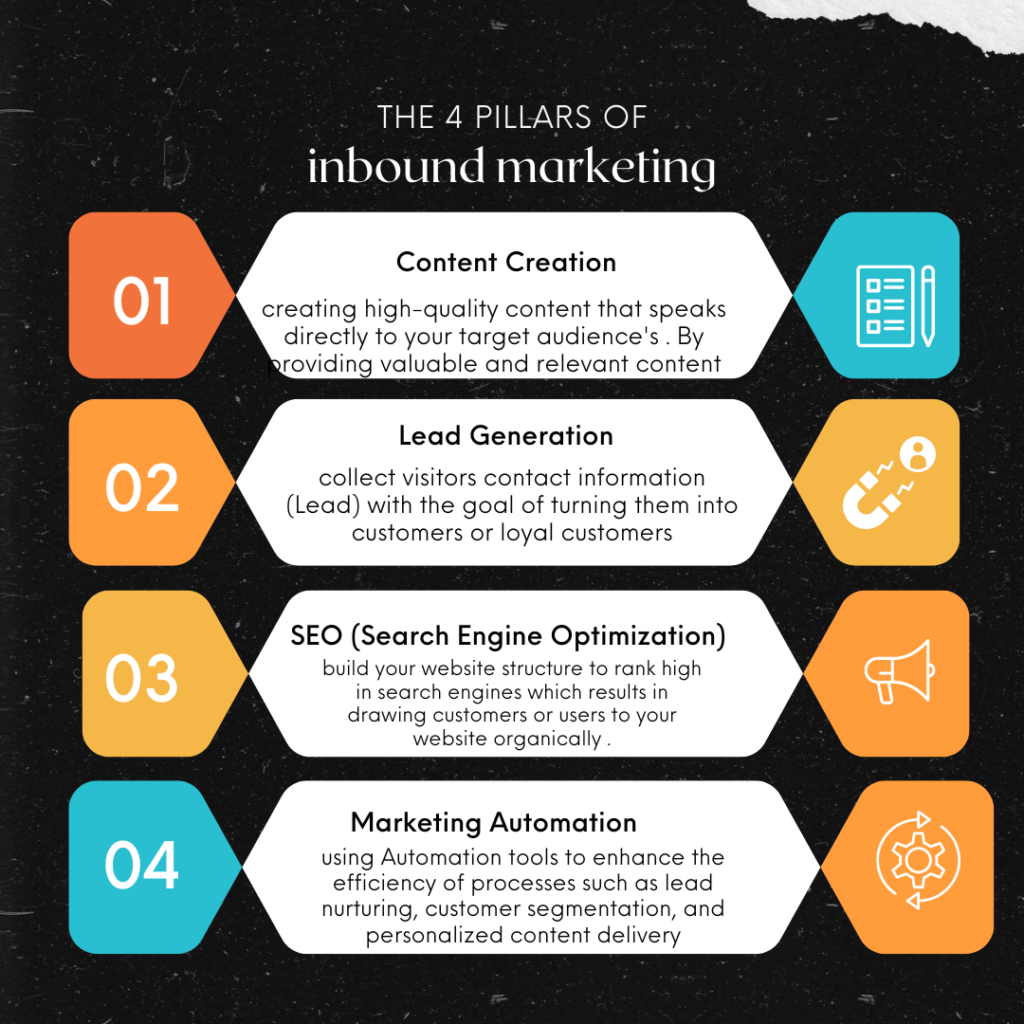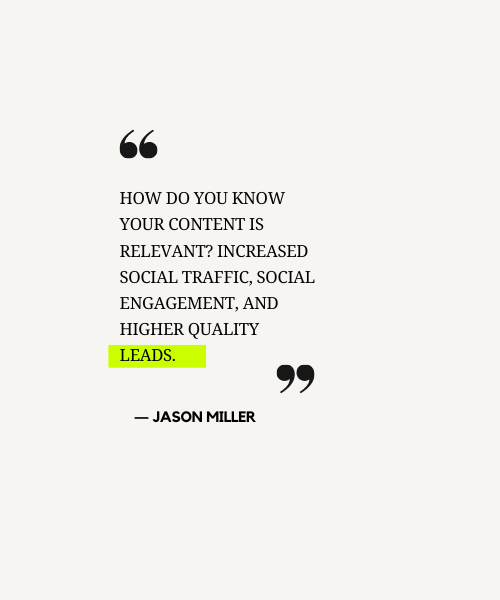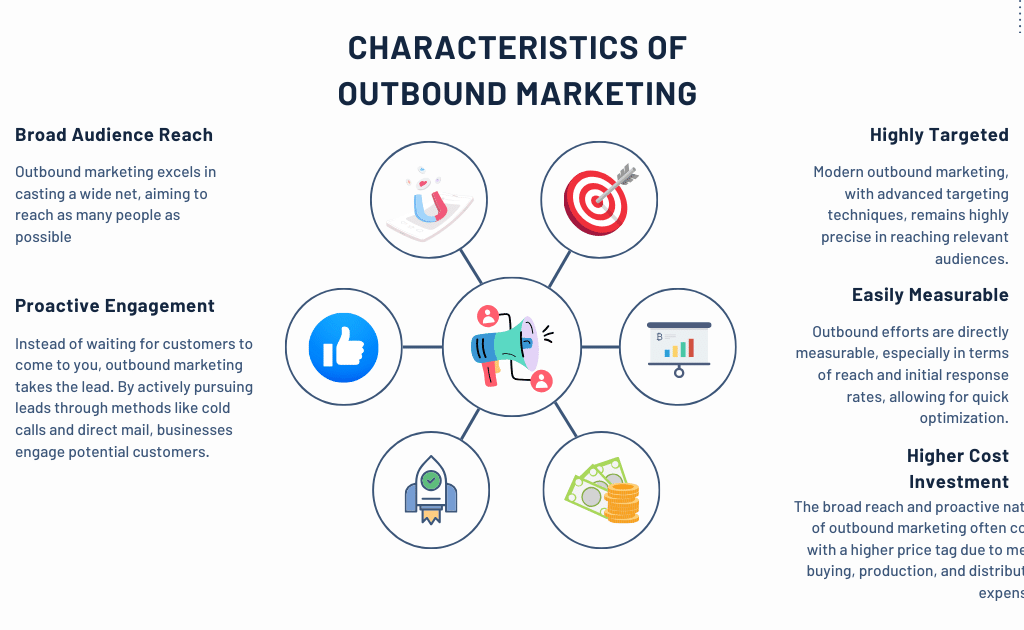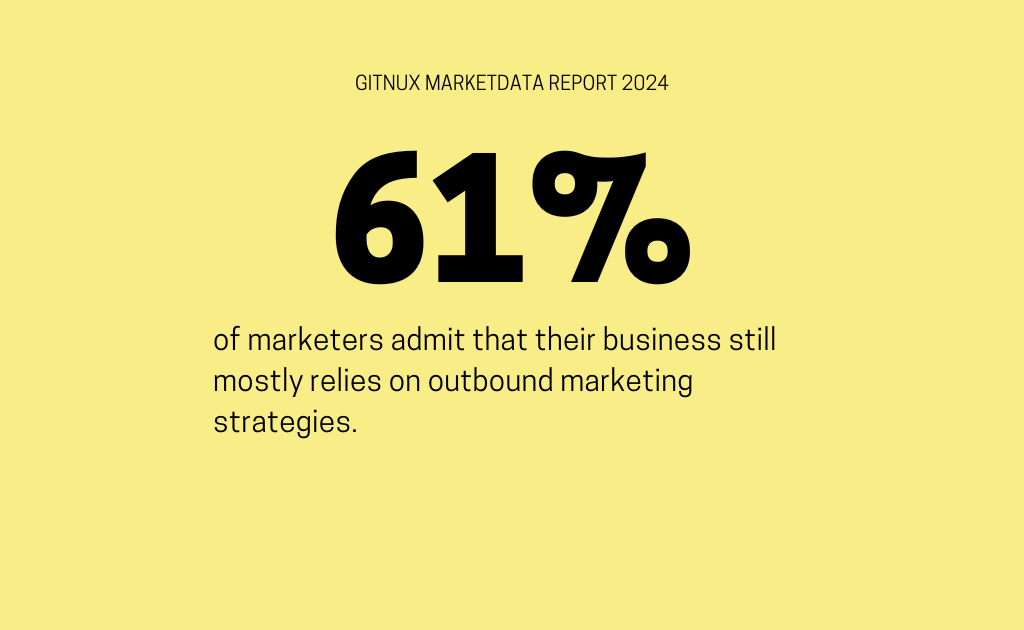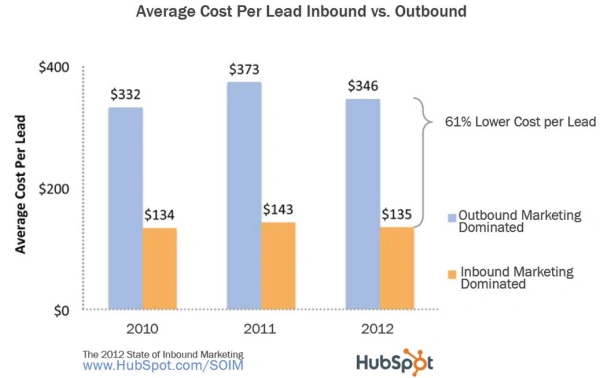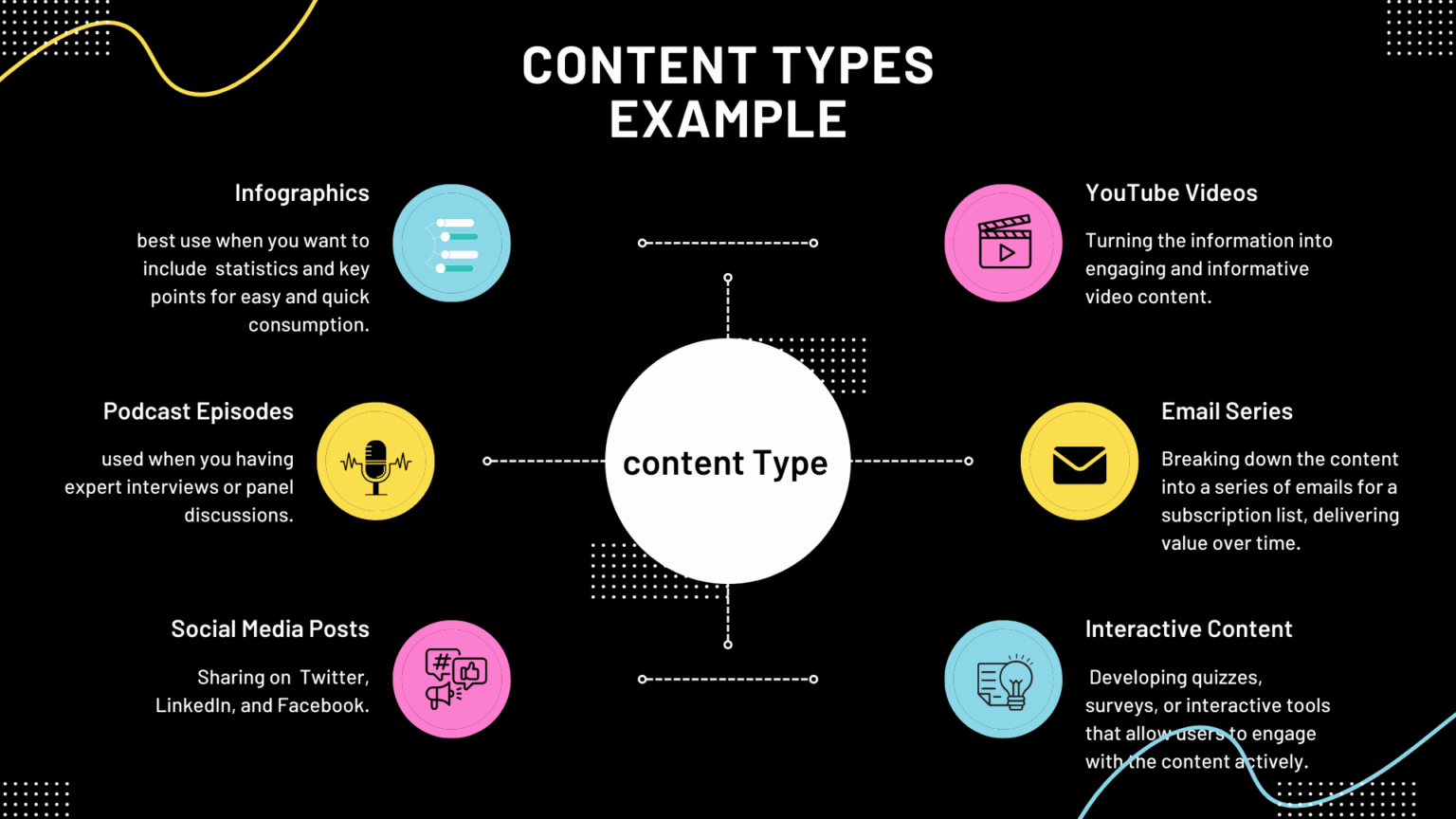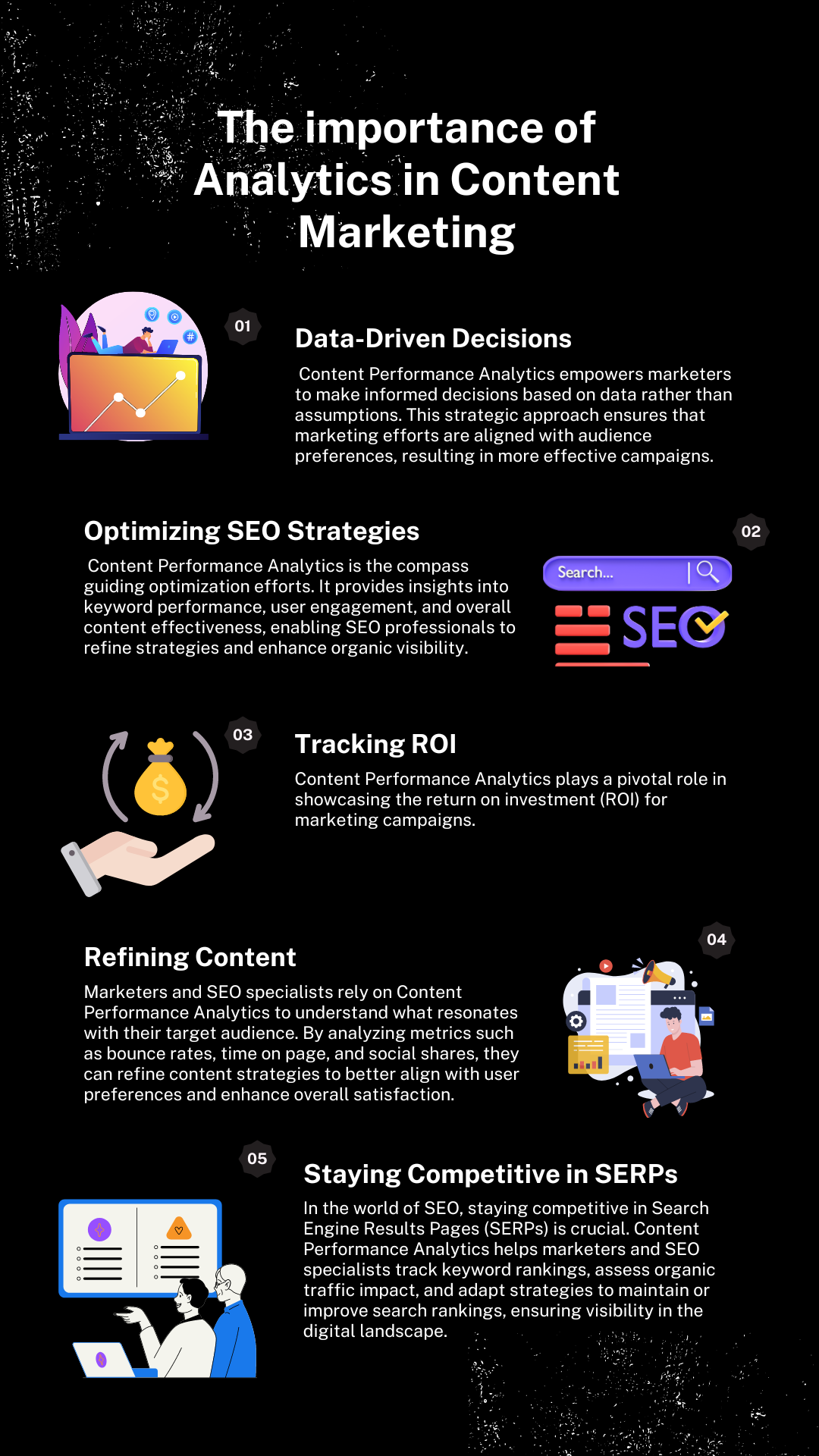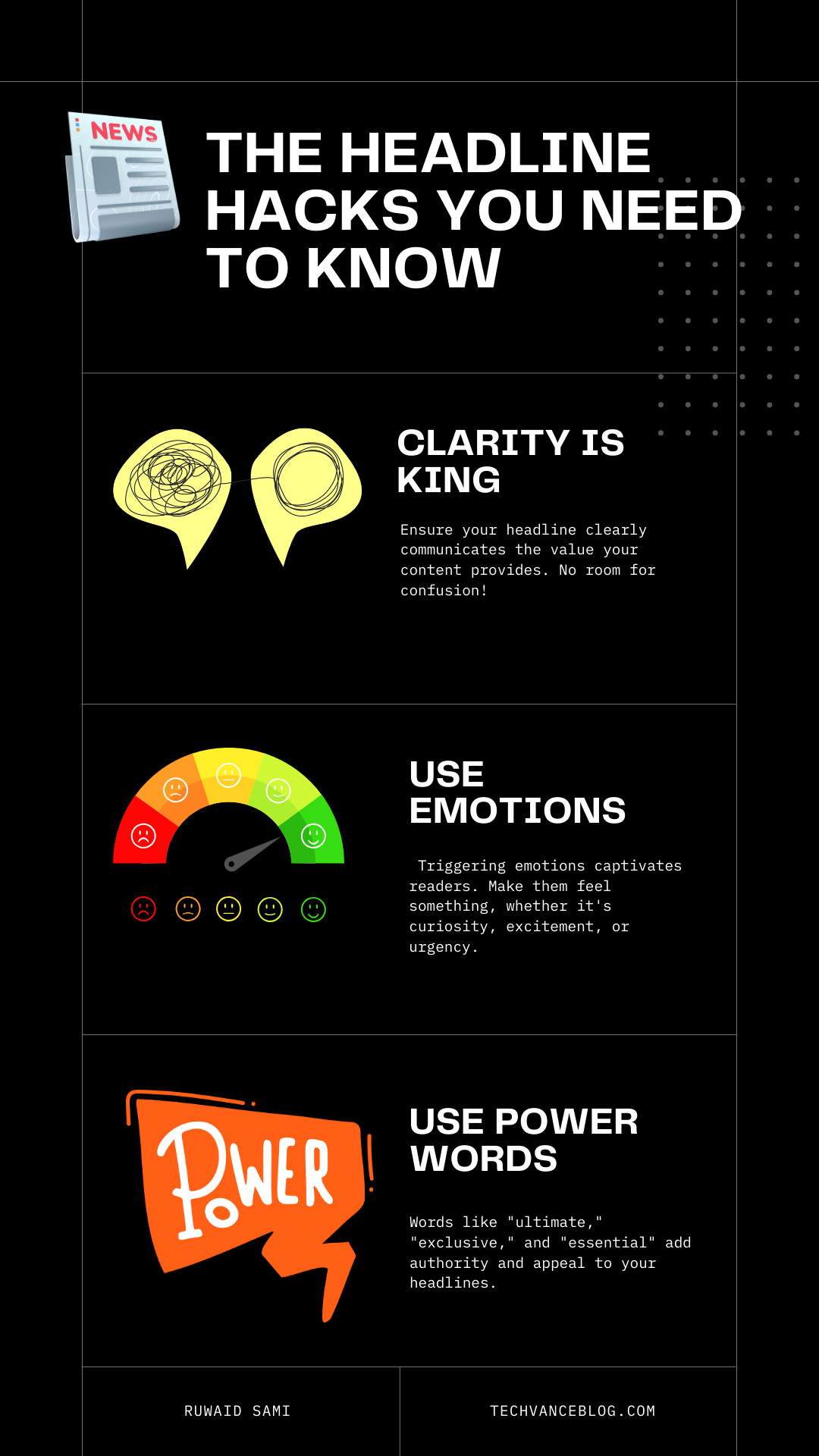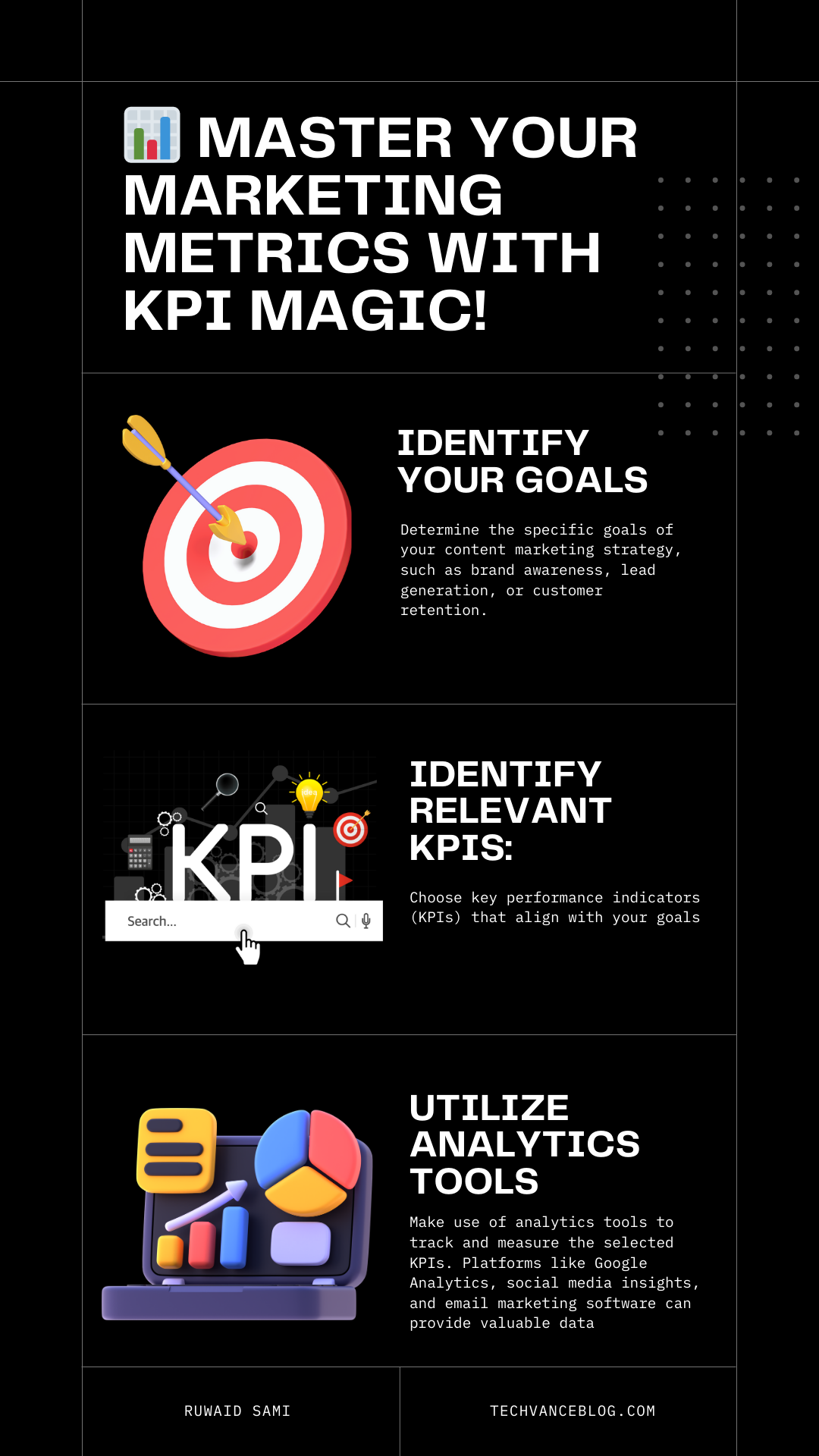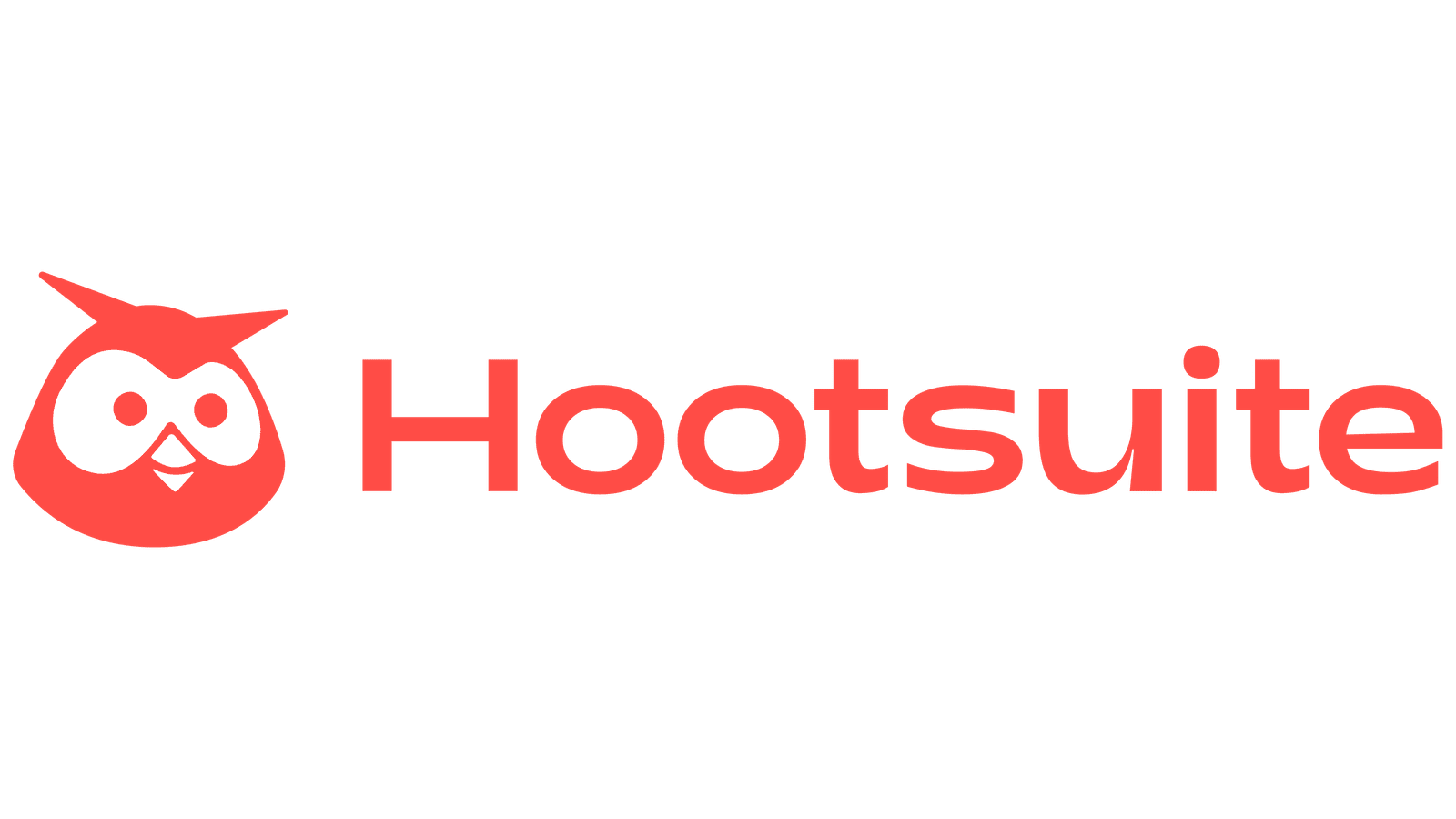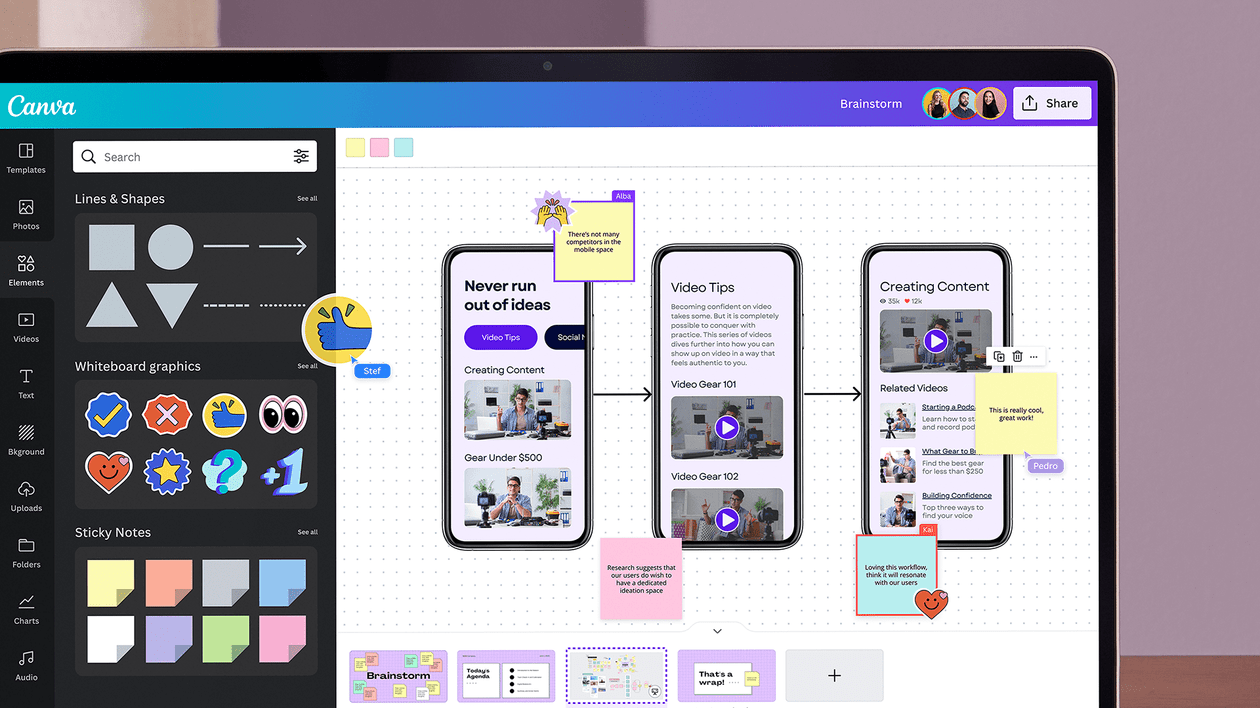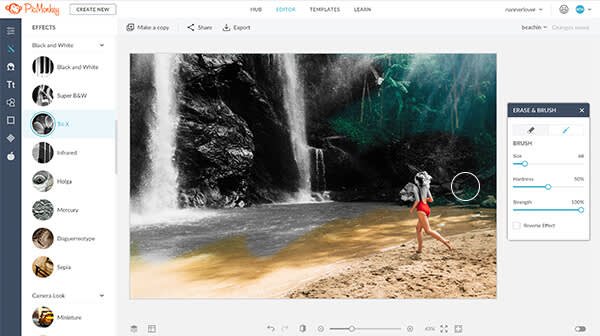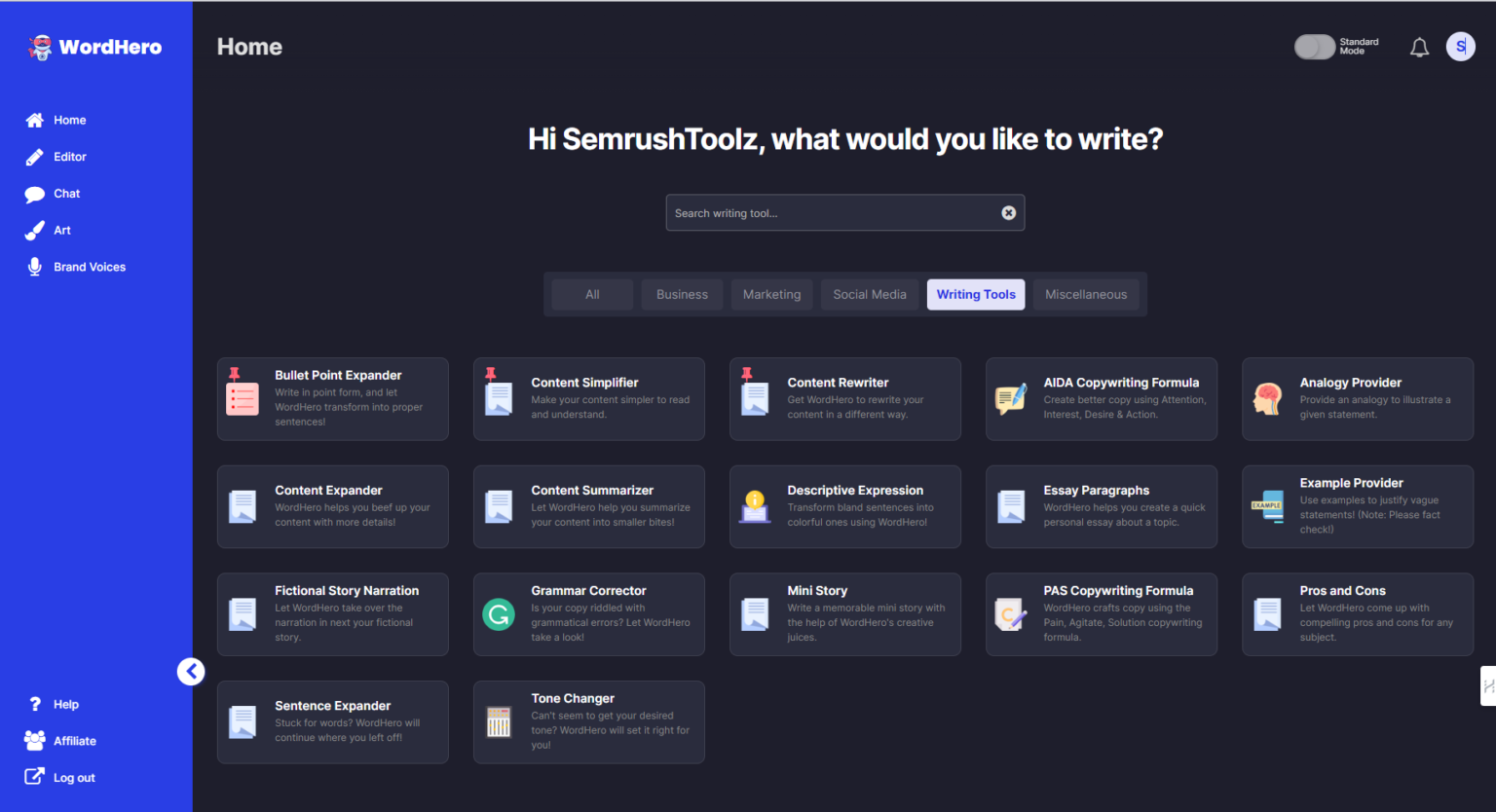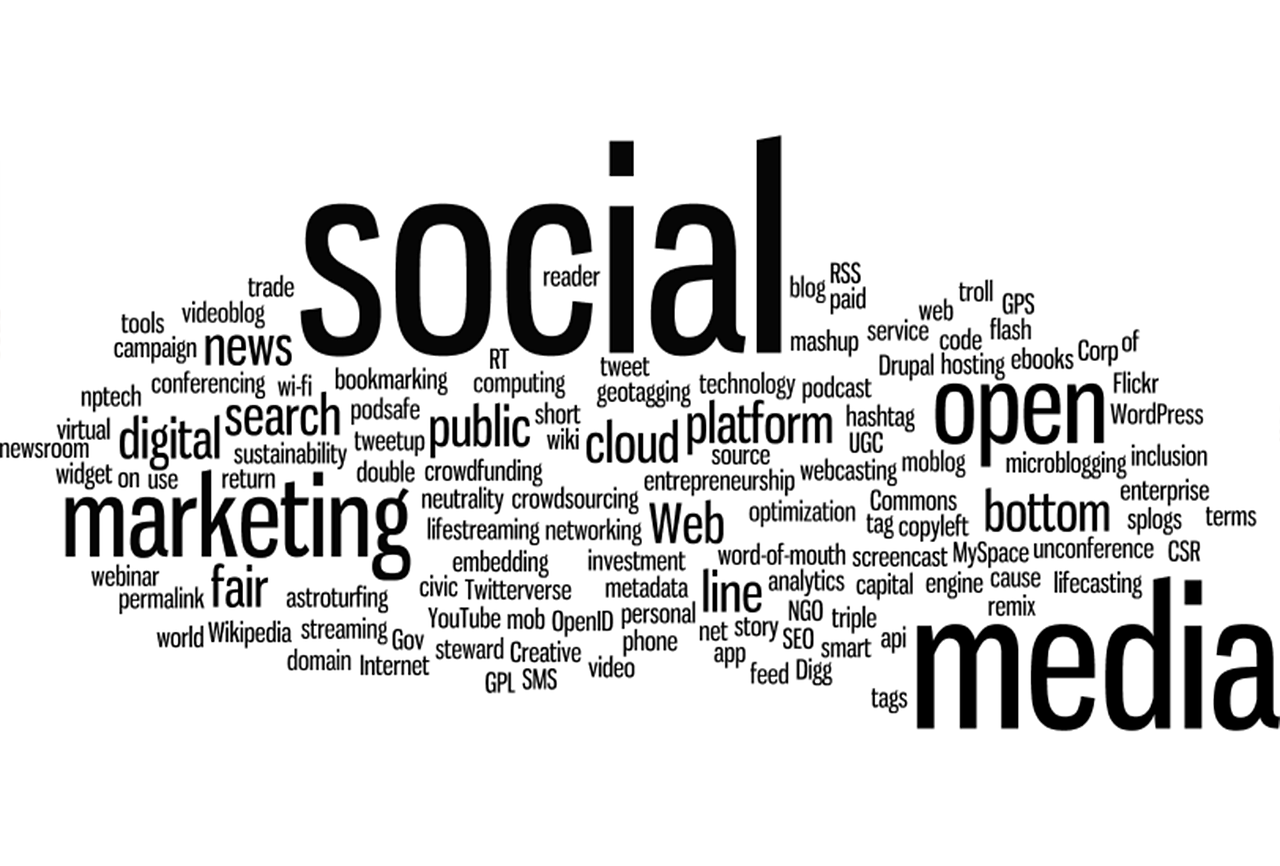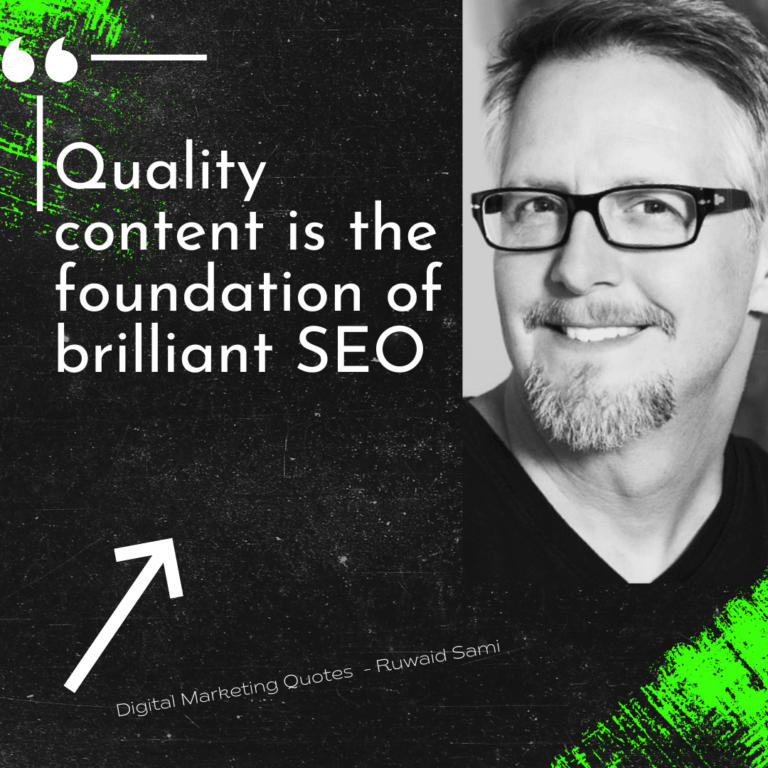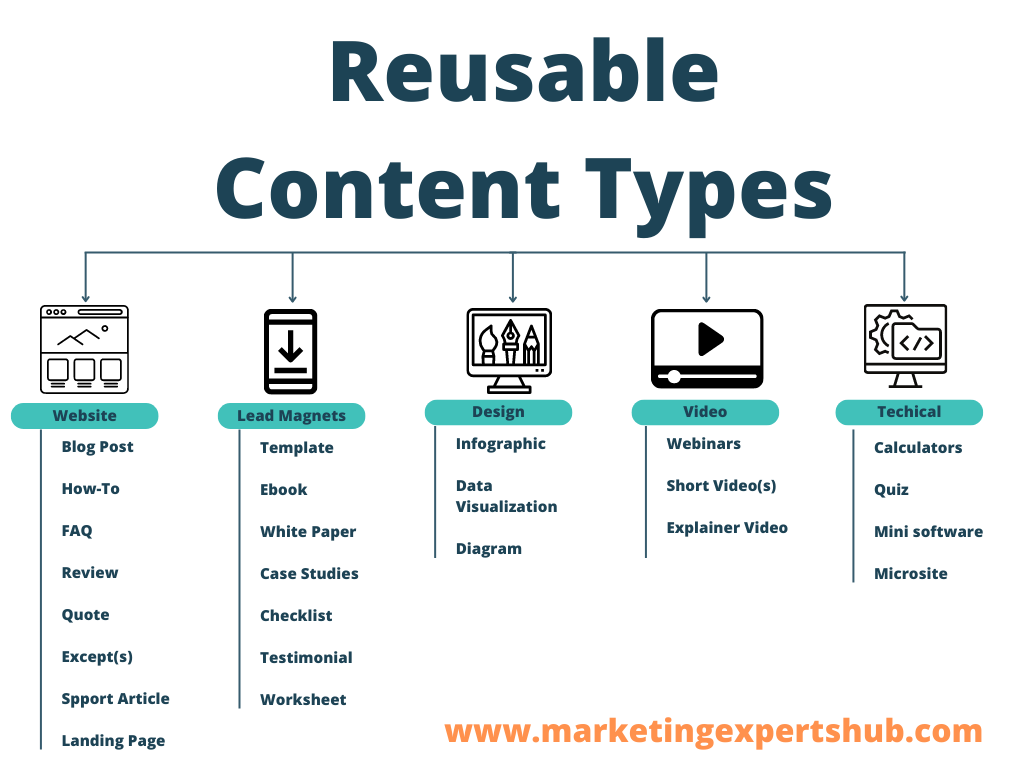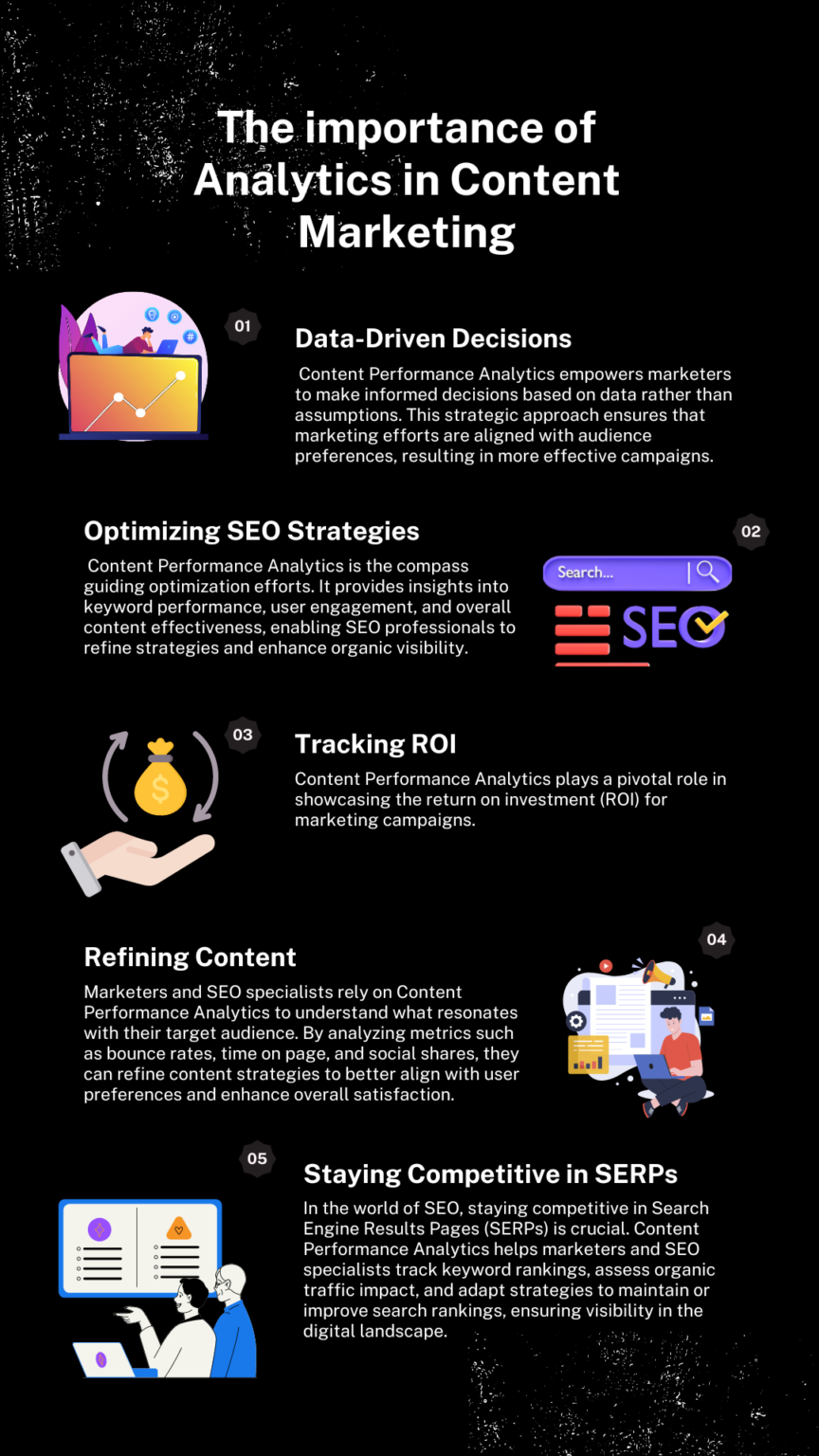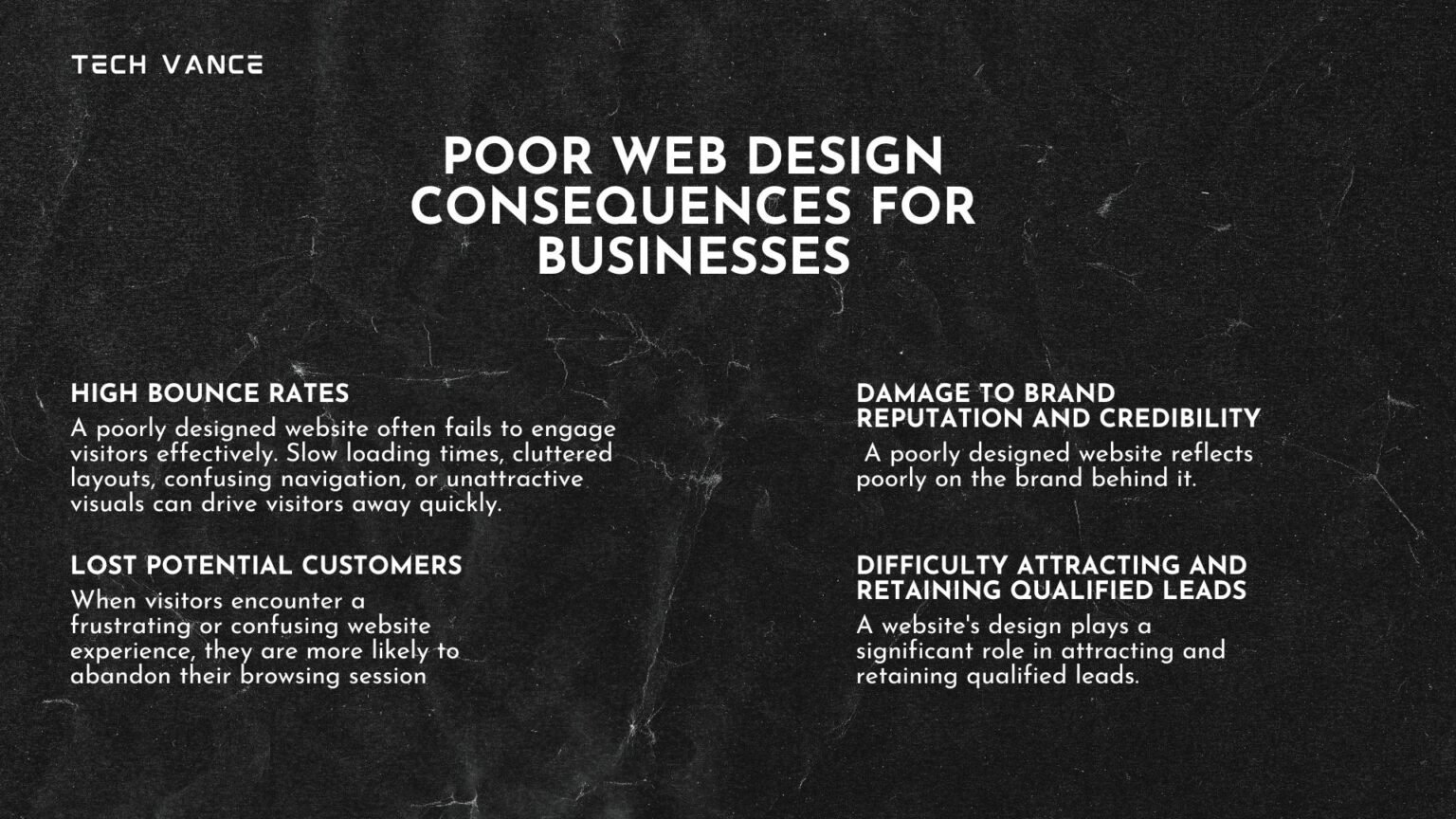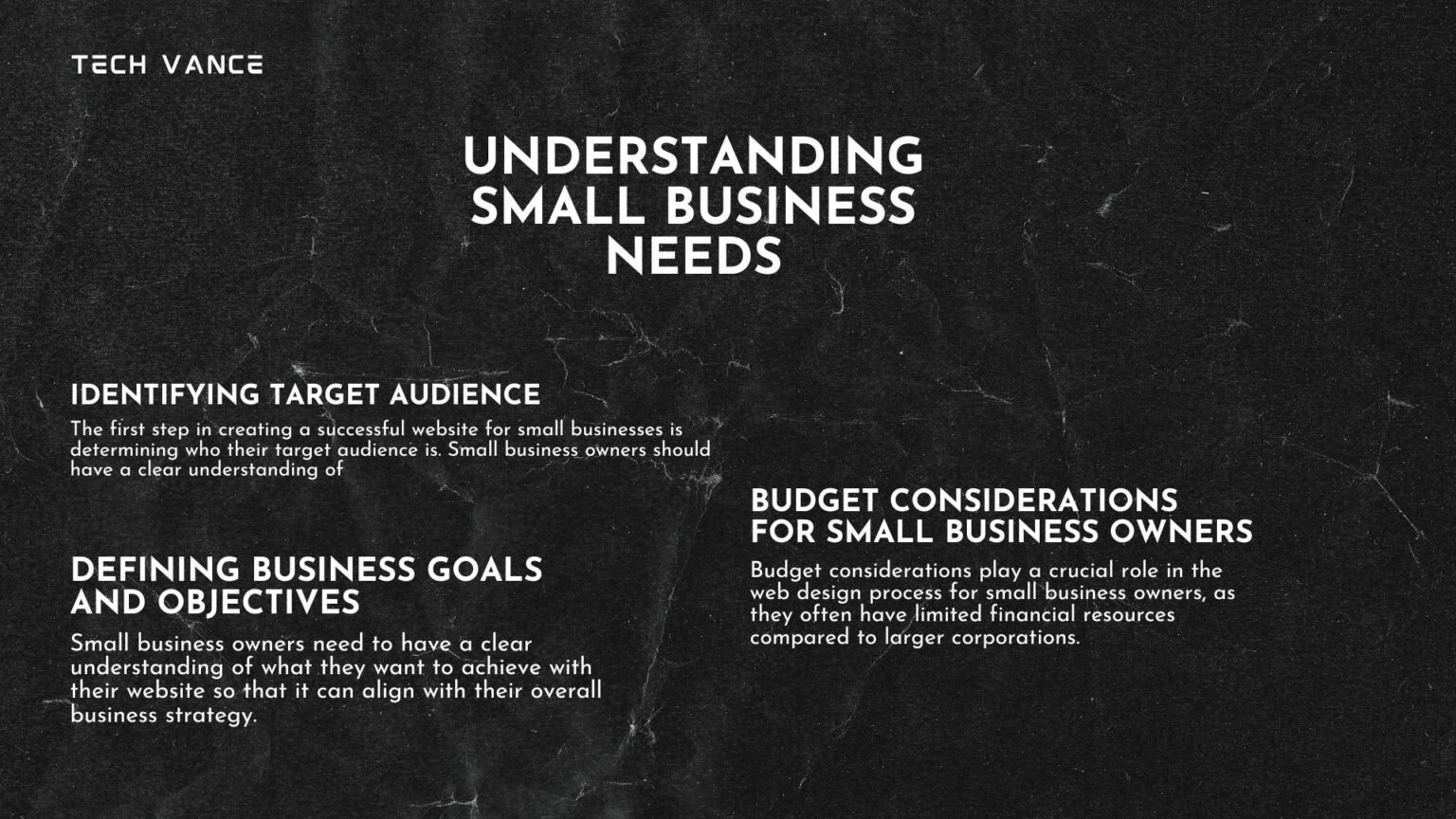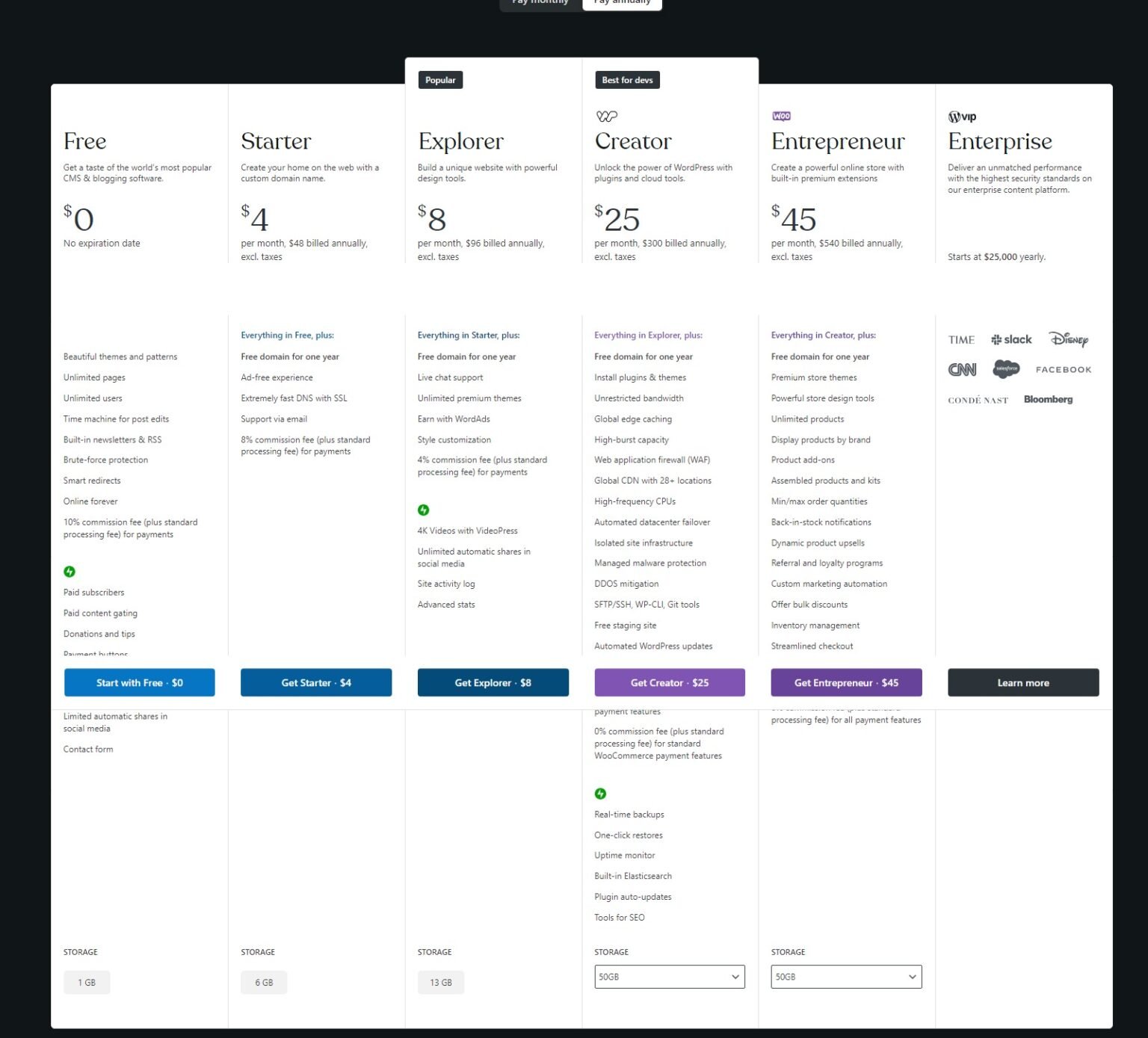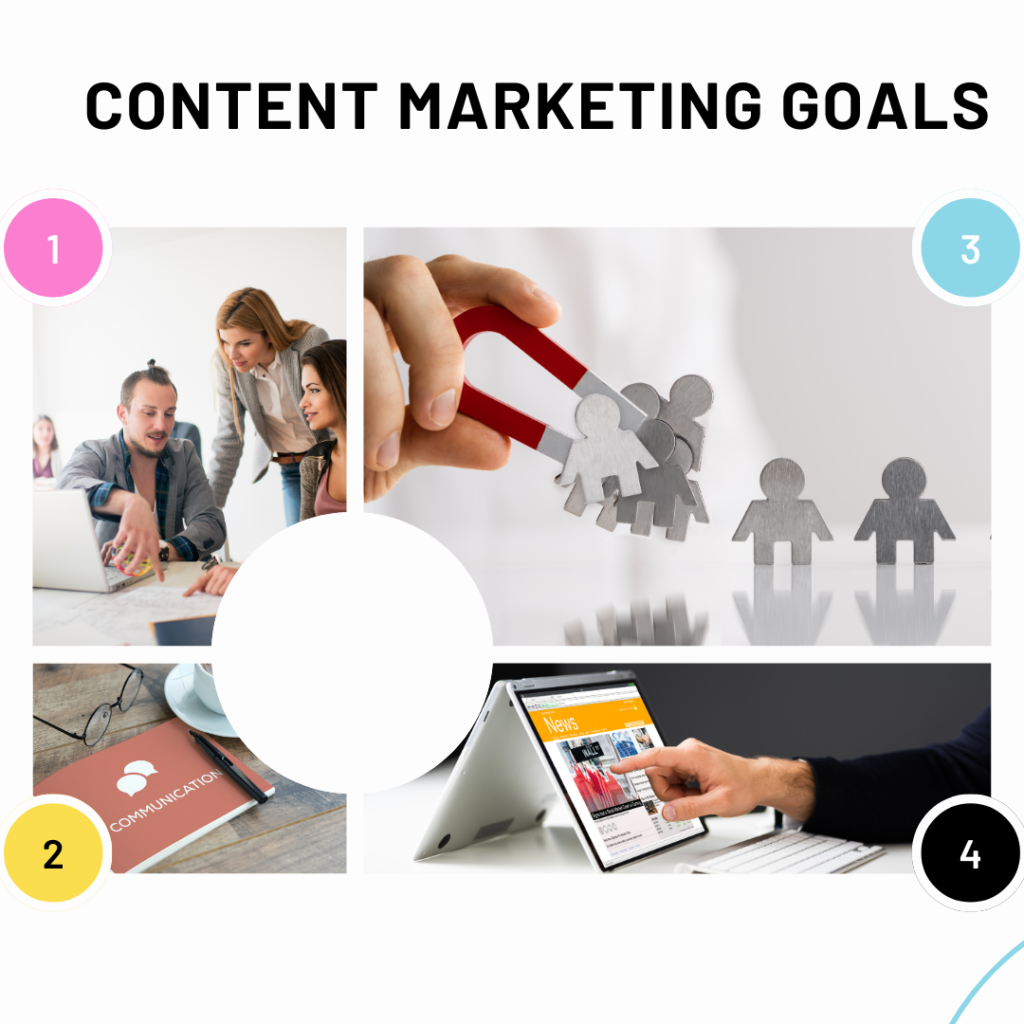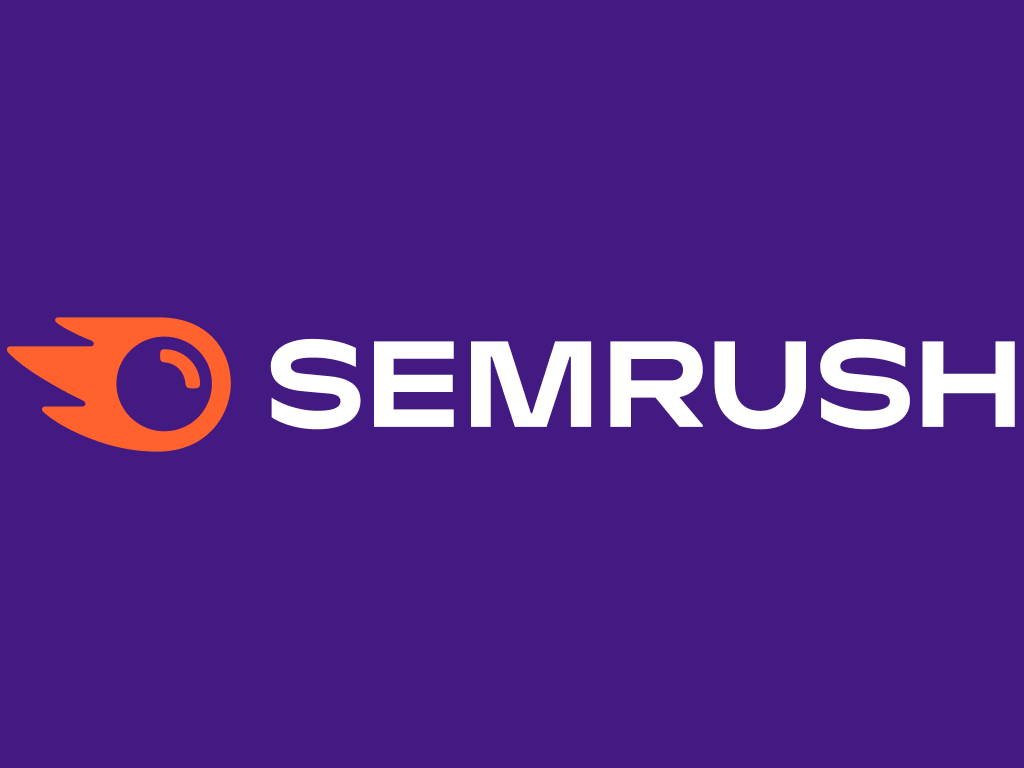5 Explosive B2B Content Marketing Trends You Can’t Ignore!
Welcome web masters and digital marketers ! ,today we are going to talk about B2B content marketing trends
that need attention to say a head of the game of the digital world .
as tech evolved and consumer habits change ; business must leave behind old b2b content marketing strategies and look forward into the future .
Rise of AI-Generated Content
With the launch of ChatGPT in 2022, people worldwide and across various industries have begun leveraging AI to improve productivity and automate tasks through AI.
since Digital marketers and SEO professionals start using AI to generate content , it made a huge shift in the digital world .
As AI algorithms can now create good written text without much human help, thanks to improvements in natural language processing and machine learning. it helped a lot of industries like journalism, marketing, and content creation, where there is a growing need for personalized content on a large scale.
Using AI-generated content is a double-edged sword, as it presents both advantages and challenges that you must watch for it.
Pros of integrating AI into content marketing
1. Increased efficiency through automating tasks such as content production and distribution.
2. Customized recommendations tailored to individual user behaviors and preferences.
3. Improved data analytics provide deeper insight into audience engagement and performance metrics, with enhanced targeting capabilities allowing to reach the right target audiences with relevant content, as well as AI assistance to scale campaigns effectively and strategies efficiently.
Cons of Integrating AI Into Content Marketing
1. Initial costs associated with adopting AI technology may be prohibitive for some businesses.
2. Over-reliance on algorithms leads to reduced human creativity when creating content.
3. Privacy considerations associated with collecting and analyzing user data to provide personalized content delivery.
4. Errors or biases in AI algorithms which could interfere with marketing campaign accuracy and efficiency.
5. Difficulty understanding and adapting to constantly developing AI technologies requires marketers to receive ongoing training and updates.
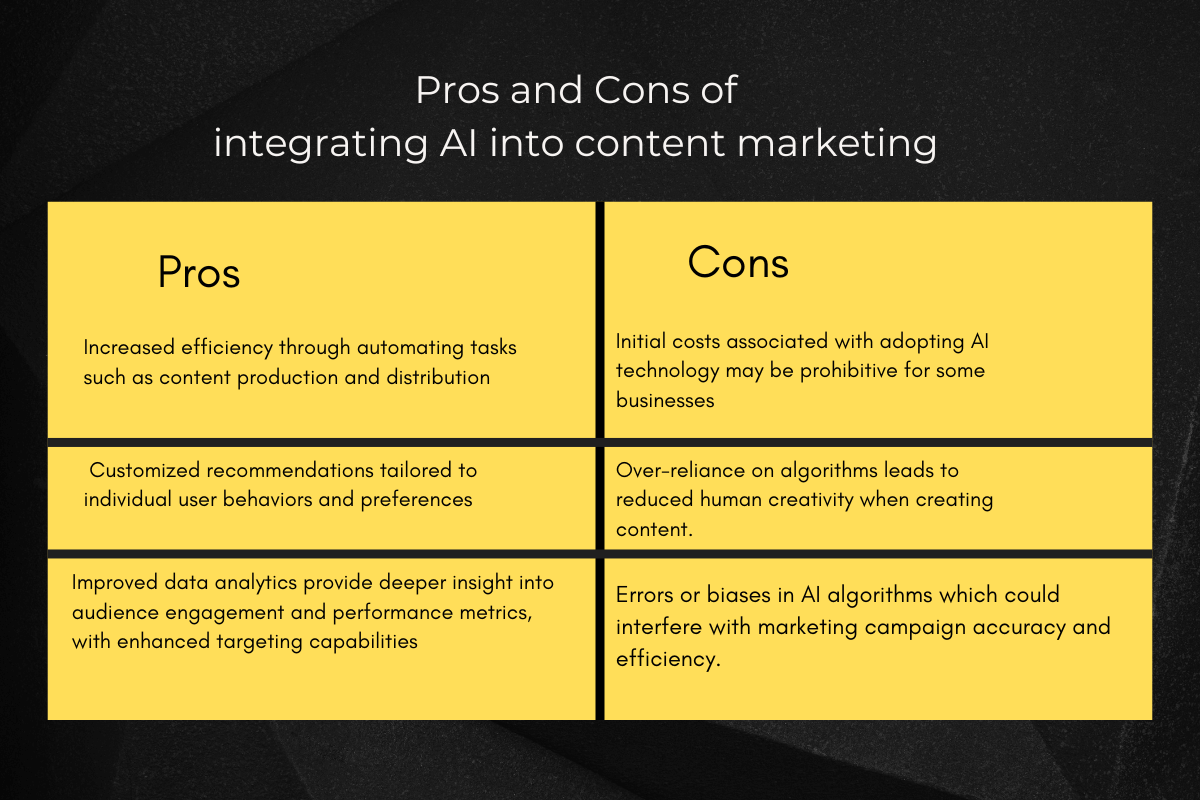
Leveraging AI Tools in B2B Content Marketing
AI tools have revolutionized B2B content marketing, providing marketers with remarkable capabilities
that allow them to streamline processes and automate tasks from content creation , and content distribution
also Businesses use AI-powered analytics to gain deep insight into their target audiences' preferences and behavior to create tailored content that resonate with prospects .
Here is a list of popular AI tools and platforms used in content marketing :-
HubSpot
is platform that helps businesses with marketing, sales, and customer service. It makes content marketing easier by providing tools to create, manage, and share content effectively. check it now
Jasper
is an AI writing assistant that can help create engaging content such as blog posts, social media marketing updates, and more. check it now
MarketMuse
This AI-powered content research and optimization tool helps marketers identify content gaps and opportunities for improving their content strategy. It offers insights on how to create more relevant and authoritative content. check it now
ChatGPT by OpenAI
Aligning with the latest advancements in natural language processing, ChatGPT can generate informative, engaging content, and provide instant customer service responses, making it an indispensable tool for enhancing content engagement and customer experience. check it now
AI-Powered Content Marketing: Inspiring Case Studies
we are going to talk about case studies that highlights the transformative power of AI in revolutionizing traditional content marketing strategies across various industries. AI has proven to be a game-changer in driving customer engagement, increasing brand loyalty, and maximizing business outcomes.
- Vanguard partnered with Persado for AI-powered advertising, achieving a 15% increase in conversion rates
- Tomorrow Sleep used AI tools like MarketMuse and Clearscope for content strategy and achieved exponential growth
for the detailed case study you can check it here
The Future of ABM in B2B content Marketing
One trend in B2B content marketing is the expanding use of Account-Based Marketing (ABM). Companies are realizing the advantages of combining account-specific content marketing with ABM strategies in order to provide personalized experiences for important accounts, making content specifically for each one instead of using a general approach.
Integrating ABM and content marketing signals a shift toward more focused and strategic approaches in B2B marketing, allowing companies to deliver targeted messages that capture key decision makers within target accounts and increase conversion rates through targeted B2B efforts. Businesses can anticipate improved ROI and greater conversion success as this trend gains steam.
Account-based Marketing Case Studies
now we are going to look into how organizations faced challenges before using content marketing, what solutions they picked, the content they made, and the results they got using ABM .
In 2020, iRidium mobile partnered with Fullfunnel.io for a successful virtual summit targeting ideal customers. They achieved 2,320 sign-ups, 34 sales-qualified opportunities, and 5 new high-value customers. By focusing on system integrators over end-users, iRidium tailored their event to meet specific needs, attracting speakers from top companies. The company's strategic approach and customer-centric focus led to exceeding their goals and gaining new clients.
Snowflake increased booked meetings by 75% through scaled hyper-personalization using ABM strategy post-IPO. Qualitative data guides account selection and content creation, leading to high engagement and valuable insights. Snowflake focuses on new account acquisition and expansion, achieving a 50% new opportunity rate with existing customers. The company's support for sales and marketing alignment is crucial for successful ABM campaigns.
Invoca achieved a 33X ROI by combining data and direct mail at Dreamforce 2015. Defined goals, exceeded them. Used predictive analytics, modeling tools, and incentives for success. Leveraged omnichannel approach for pre-show outreach. Coordinated efforts with Tactile Marketing Automation for fulfillment. Key takeaways: introduce prospects to your business before face-to-face, use incentives, and automate processes.
you can check the full case studies in depth here
Elevate B2B Content Marketing Through Voice Search
Voice search technology has advanced quickly, moving from simple voice recognition to more complex systems like Siri, Alexa, and Google Assistant. These virtual assistants have changed how people use technology and search for information. In B2B content marketing, the rise of voice search is important. Businesses need to adjust their content for voice queries to stay competitive as more users rely on voice search for fast answers.
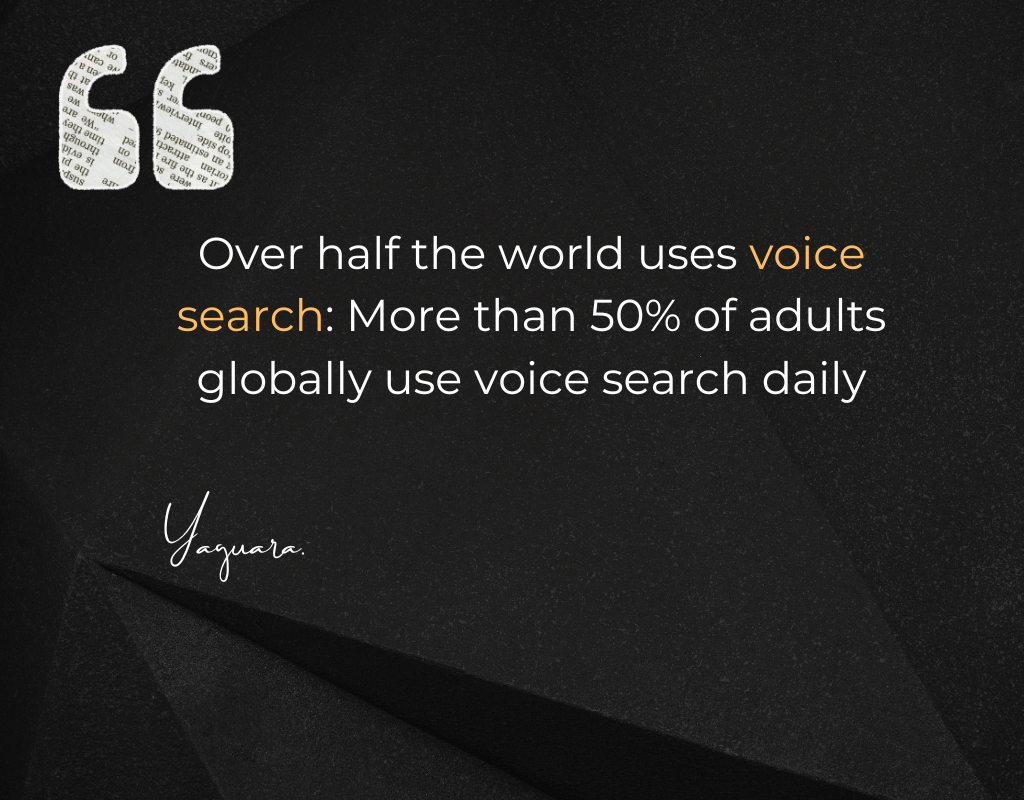
voice search Current impact on B2B content marketing
Voice search is having a big impact on B2B content marketing. It's becoming more important as people look for quick and easy ways to find information. B2B buyers and decision-makers are using voice search more in their work because it's fast and hands-free.
Websites that are set up for voice search are getting more visitors because voice searches are usually more direct. Companies that do well in voice search are not only getting more attention online but are also seen as leaders in their industries. It's important for B2B marketing plans to include voice search strategies to reach a wider audience.
Successful B2B Brands Utilizing Voice Search Optimization
IBM: A tech giant like IBM understands the importance of staying ahead of the curve. They've optimized their website content with long-tail keywords and natural language phrasing to better answer the complex questions B2B buyers might ask with voice search [Search Engine Land]. For instance, their content might target queries like "what are the benefits of cloud computing for the manufacturing industry?"
GE Healthcare: This healthcare giant targets busy professionals who might use voice search while on the go. Their website content is optimized for questions like "how can medical imaging improve patient outcomes?" By providing clear, concise answers in a conversational tone, they position themselves as a thought leader and a resource for B2B buyers [Search Engine Journal].
Xero: This accounting software company understands the importance of local SEO for B2B voice search. They've ensured their business listings are accurate and consistent across directories, and their website content incorporates location-specific keywords to improve their visibility in local voice search results. So, a potential customer asking "best accounting software for small businesses near me" is more likely to find Xero.
Challenges in Voice Search Optimization
Voice search optimization is a new opportunity for B2B marketers, but it has some challenges.
- dealing with different accents and languages. These variations can make voice search less accurate. It's important to create strategies that can handle this diversity to reach more people.
- Another concern is privacy and security. Voice-activated devices can lead to data breaches and unauthorized access to private information. Companies need to protect user data to build trust and follow the rules.
- Keeping a consistent brand voice in voice search platforms is also hard. When interactions are mostly verbal, it's tough to show a brand's personality and values.
Solving these challenges needs a mix of technology, content creation, and security measures. Even with these difficulties, voice search optimization can bring big benefits to B2B marketing, like better visibility, engagement, and customer satisfaction.
Incorporating Influencer Marketing in B2B Strategies
Social media influencers have revolutionized how companies market themselves.
Influencers can have a great effect on what consumers buy; their influencers can shape opinions, start trends, or convince people to buy things with just one post.
Influencer marketing requires authenticity, creativity, and partnerships that bind brands and customers in unique ways; content creators aren't simply pushing products but telling stories that connect the brand with its target market in new ways.
What is influencer marketing?
Influencer marketing is a strategy that enables businesses to collaborate with influencers to promote their brands. Instead of marketing to people directly,.
It's like having a trusted person introduce your brand to their followers in a natural way.

Importance of Influencer Marketing in B2B
Partnership Builds Trust and Credibility
Forming relationships with influential figures within your industry can lend your products or brand greater credibility, making it easier for potential business clients to trust your offerings.
Strengthen Your Brand Awareness
B2B influencer marketing can significantly boost brand recognition among your target business audience when influential figures share your content through their network.
Influencing Decision-Making
Influencers who are considered thought leaders have the ability to sway key decision makers within a business by virtue of their expertise and authority.
Creates Long-Term Partnerships
Working with influencers can often result in long-term collaborations that strengthen your brand's presence in the industry.
Influencer Marketing Allows Targeted Reach
As opposed to broad-spectrum advertising, influencer marketing enables you to reach a more specific and niche-specific audience - specifically those interested in the niche or industry you operate within.
Influencers Are Beneficial to Content Strategy
Influencers can provide content that enhances and complements your existing content strategy, adding fresh perspectives and value for your target audience.
Improved SEO
Engaging influencers in sharing or mentioning can result in increased online traffic, as well as backlinks to your site - which are both of course beneficial for SEO purposes.
Top B2B & SaaS Influencer Marketing Case Studies
HubSpot
HubSpot executed its influencer marketing for the online + offline INBOUND 2023 conference
by collaborating with Neil Patel, Eric Siu, Reese Witherspoon, and Ann Handle . to boost registration and brand awareness for the INBOUND 2023 conference successfully.
Shopify
Shopify's campaign promotes the portable POS Go, collaborating with influencers and store owners for authenticity.
Utilizing real experiences, the campaign showcases benefits and generates revenue successfully.
Shopify's influencer marketing campaign for POS Go gained authenticity through collaboration with influencers and store owners, resulting in increased revenue and brand visibility.
The Rise of User-Generated Content (UGC)
User-Generated Content (UGC) is changing how brands do marketing and connect with customers.
UGC includes things like customer reviews, case studies, and social media posts from users. It helps build trust with potential clients because it's made by the audience, not the brand.
Consumers like UGC because it shows real proof of how a product or service benefits users.
Companies can use UGC to enhance their marketing with real stories and create a community of brand supporters. This strengthens their market presence and reputation.
How UGC can supercharge your B2B strategy
User-generated content (UGC) can be an indispensable asset to B2B marketing strategies, offering numerous advantages beyond simply building trust and credibility.
Here's how UGC can enhance your B2B strategy:
Authenticity and Trust
Real customer reviews are more reliable than advertising from your business, building up customer confidence in you as a reliable partner. When customers share positive experiences about your product or service it builds up trust between all involved.
Social Proof and Influence
Customers trust recommendations from friends more than advertisements, so satisfied customer reviews are an effective way to drive buying decisions and attract new customers to your brand.
Increased Engagement
Customer content has the power to spark meaningful discussions and interactions among target consumers, inspiring more comments than regular ads, increasing brand recognition while building community support for your brand.
Affordable Content Creation
Utilizing customer content saves both money and supplies new material for marketing. It's an engaging way of creating engaging material without incurring high production costs.
Customer Success Stories
Customer reviews offer valuable insight for B2B buyers navigating complex decision-making processes. Case studies and testimonials that feature customer reviews provide an accessible perspective to potential B2B customers.
Valuable Customer Insights
Analyzing customer content provides feedback on product use and helps your organization better understand your audience, making it an invaluable source of data that can help improve products while targeting specific target demographics.

conclusion
In conclusion, B2B content marketing is always changing, and it's important for businesses to keep up to succeed online.
While embracing these new trends, it's essential to understand how they contribute to B2B demand generation. Learn more about boosting your sales with killer demand generation strategies here.

